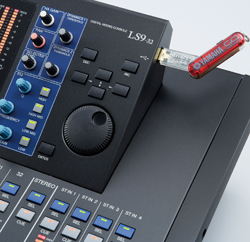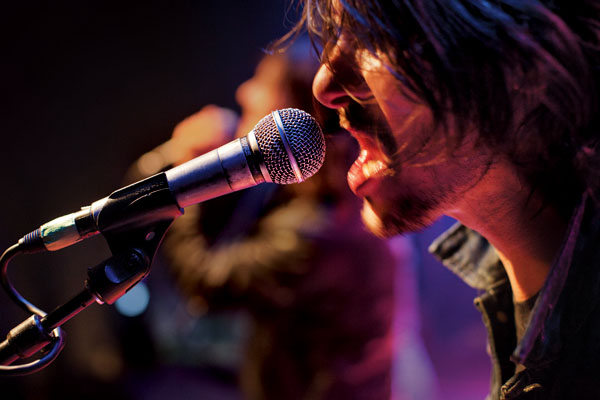
In-ear monitor engineers enjoy a huge benefit from their performers playing inside a similar ‘room’ at every show.
Since IEMs travel with their performers, simply using the same wireless or hardwired systems produces consistent results, with the effects of the changing acoustics of different venues reduced by the 25 dB of isolation provided by custom molds.
If the same make and model of mics and DIs are used in every day, the results for IEM performers are surprisingly consistent, other than extreme venue acoustics and slap back that get into open stage microphones.
For wedge-based performers and front of house engineers, daily changes in acoustics are a bigger problem and consistent input list inventory is even more important, allowing engineers to quickly focus on the sound of the venue.
Regular Round Mic
The FBT engineer’s microphone choices dictate the ability of local suppliers to duplicate them from one show to the next. Some microphones are almost universally available. Shure’s venerable and ubiquitous SM58 can be found in every professional microphone locker or workbox, hence the expression “No one ever got fired for bringing an SM58 to the gig.”
Popular vocal mics that are also found in house inventory include the AKG C535, Audix OM7, beyerdynamic M-88, Neumann KMS 105, and Shure’s own BETA 87. While there are other modern vocal mics to choose from, it takes time for newer products to proliferate into house and local vendor stock.
Engineers who choose vocal mics that are less common in local inventory are forced to bring them along if they want consistency. However, an extra benefit of carrying vocal mics is it can guarantee each performer hygienically puts their mouth on the same mic every night, which is important for singers whose ability to perform daily requires them to be healthy enough to sing.
The discussion could easily turn towards personal feelings about the SM58. However, their cost is low and their use so widespread that it’s easy to expect venues or their vendors can supply them universally. SM58s work predictably on stages with moderate SPL and where IEM use precludes wedges and side-fills from being pointed at singers. Wedge-based monitoring benefits from the tighter polar patterns of hyper- or supercardioid vocal mics on louder stages.
FBT engineers quickly learn that substituting a Shure BETA 58 for an SM58 results in a 4 dB increase in signal into the console, along with an increase in proximity effect from the mic’s higher directivity, requiring a corresponding reduction in gain and higher high-pass filters. Other vocal mic manufacturers carefully provide similar or lower sensitivity to promote substitution.
Another issue is choosing between standard, widely available inventory that can be supplied at every gig or widening the mic options to include less commonly available makes and models. It’s simply not practical for many FBT engineers to carry a full complement of mics and DIs.
A blended approach, where one or more special vocal or instrument mics are carried for “money” channels, while the rest of the inputs are covered by standard choices, allows the engineer a bit more freedom and is commonly used. This can reduce carried mics to just a lead vocal and a kick drum or couple piano mics, depending on the artist.
No matter how carefully an artist’s itinerary is planned, there will always be special performances where it’s only practical for every microphone to be supplied by a local audio vendor due to logistics, whether it’s a TV show or a one-off in Dubai. An input list that’s supplied entirely locally has the additional benefit of allowing the artist’s engineer to simply walk away from the stage afterwards.

